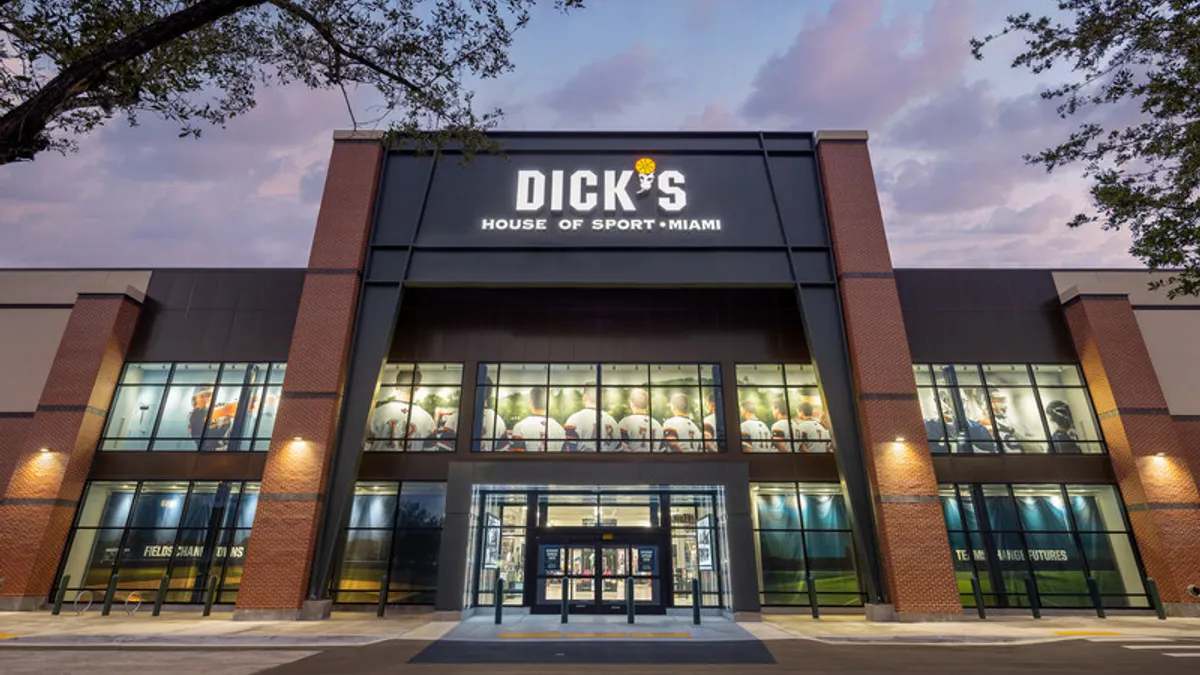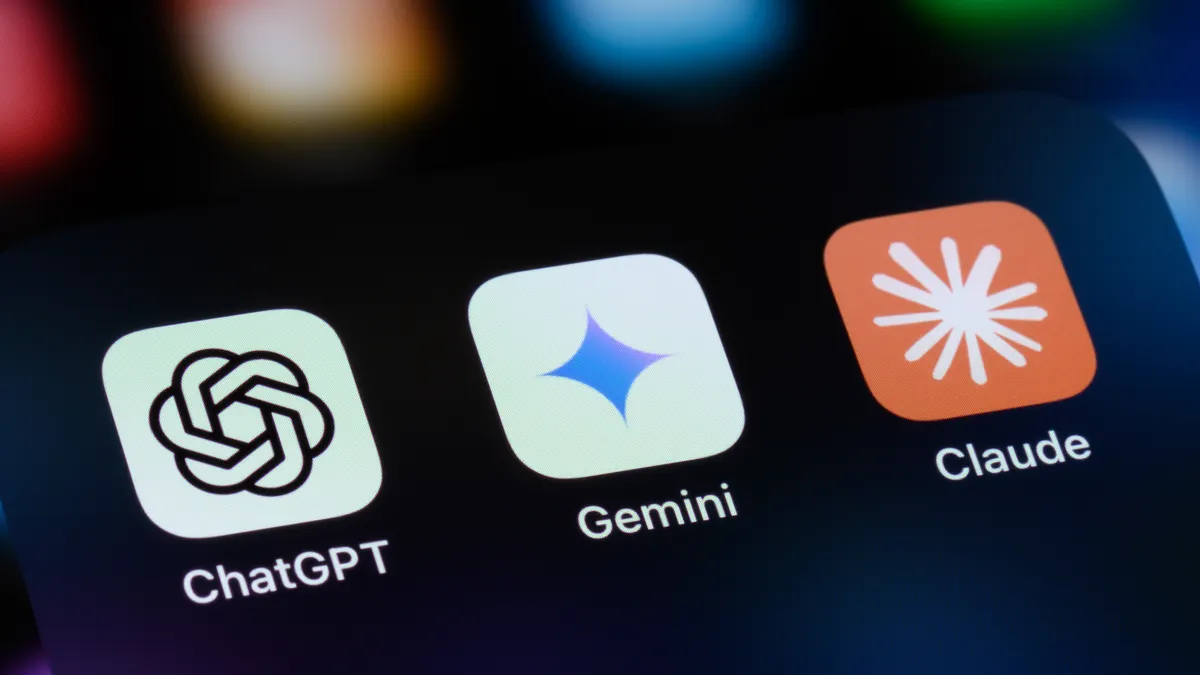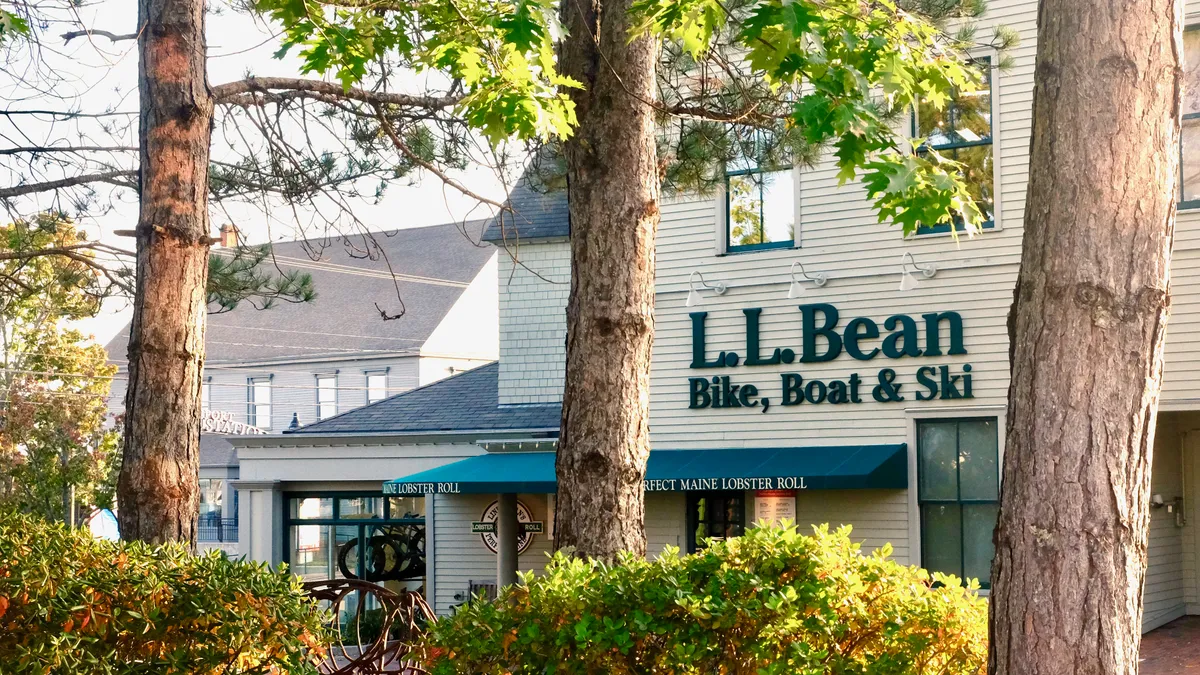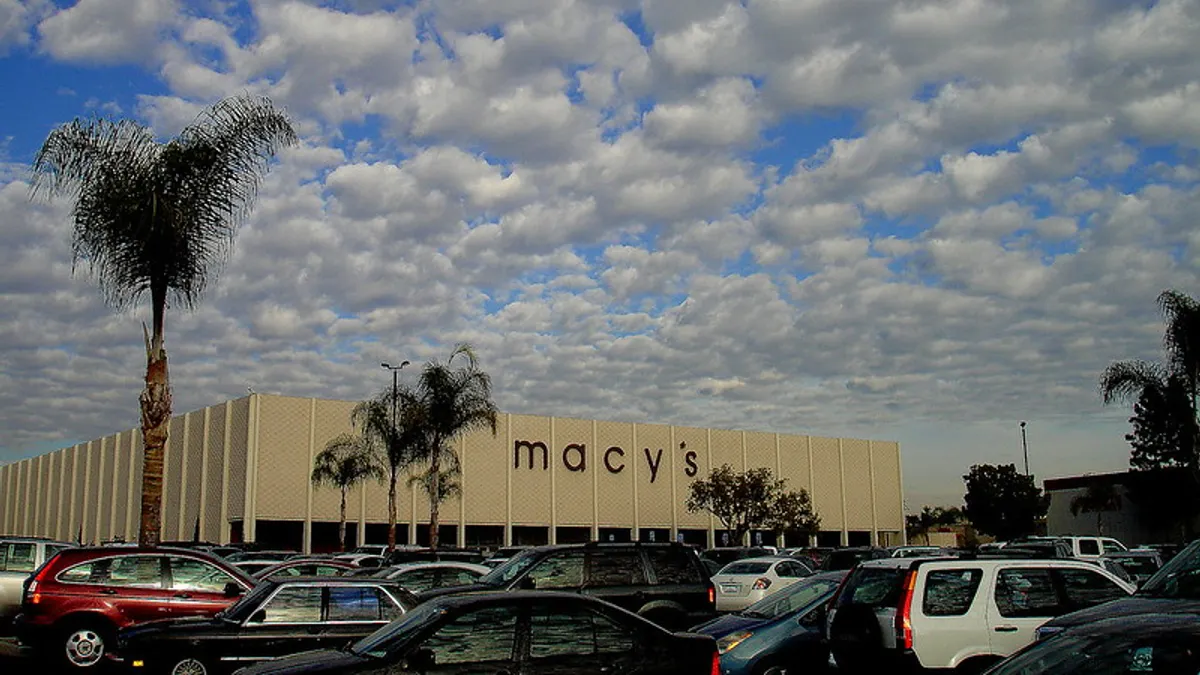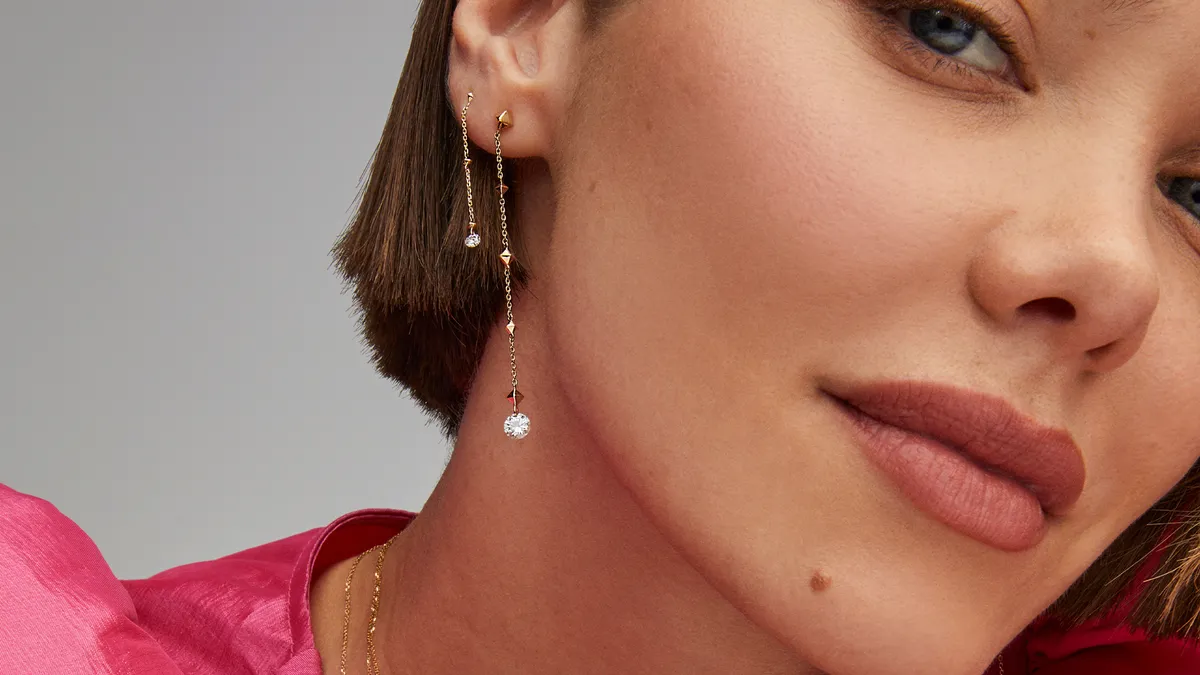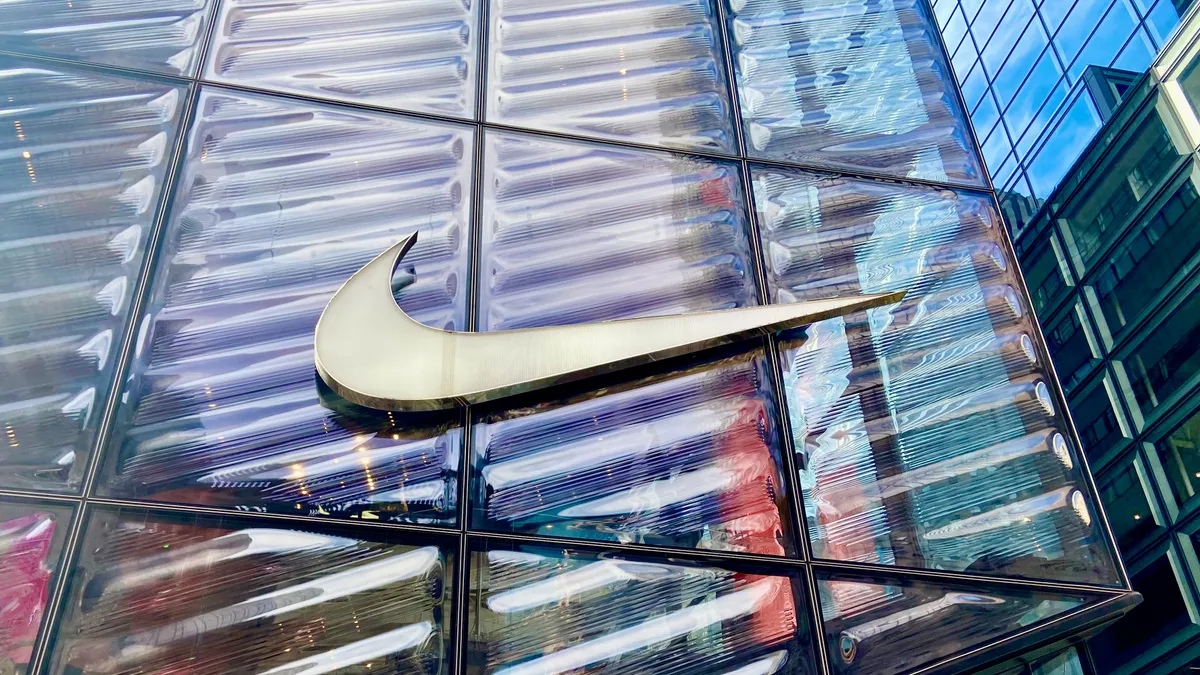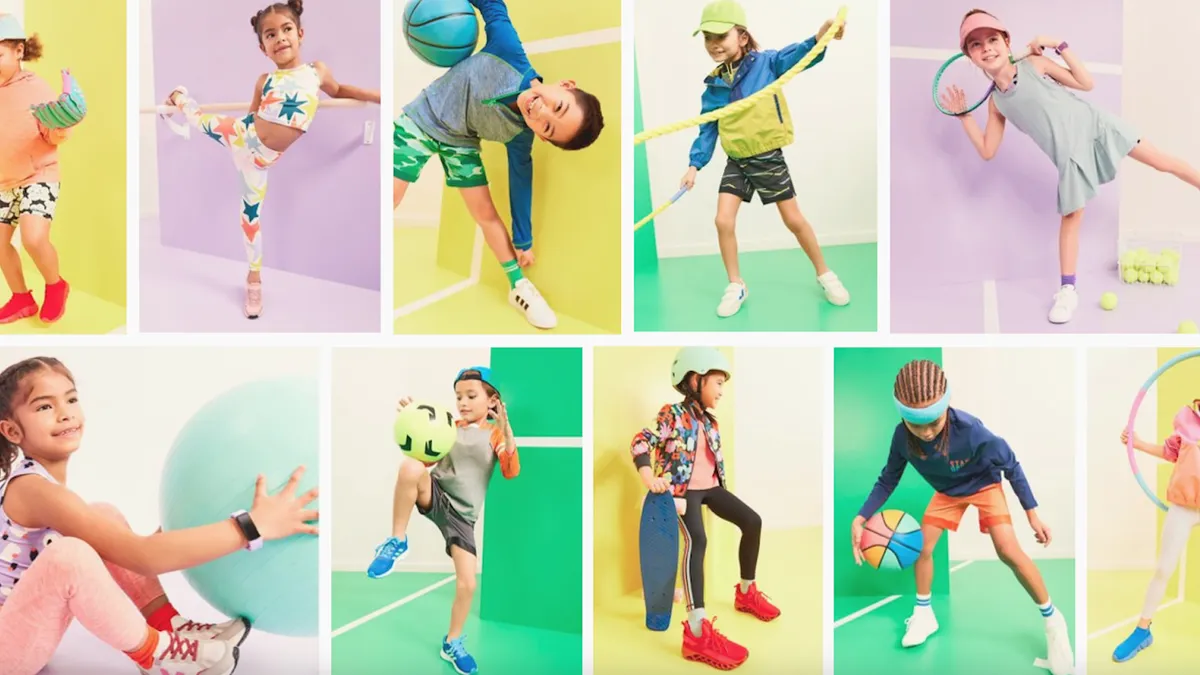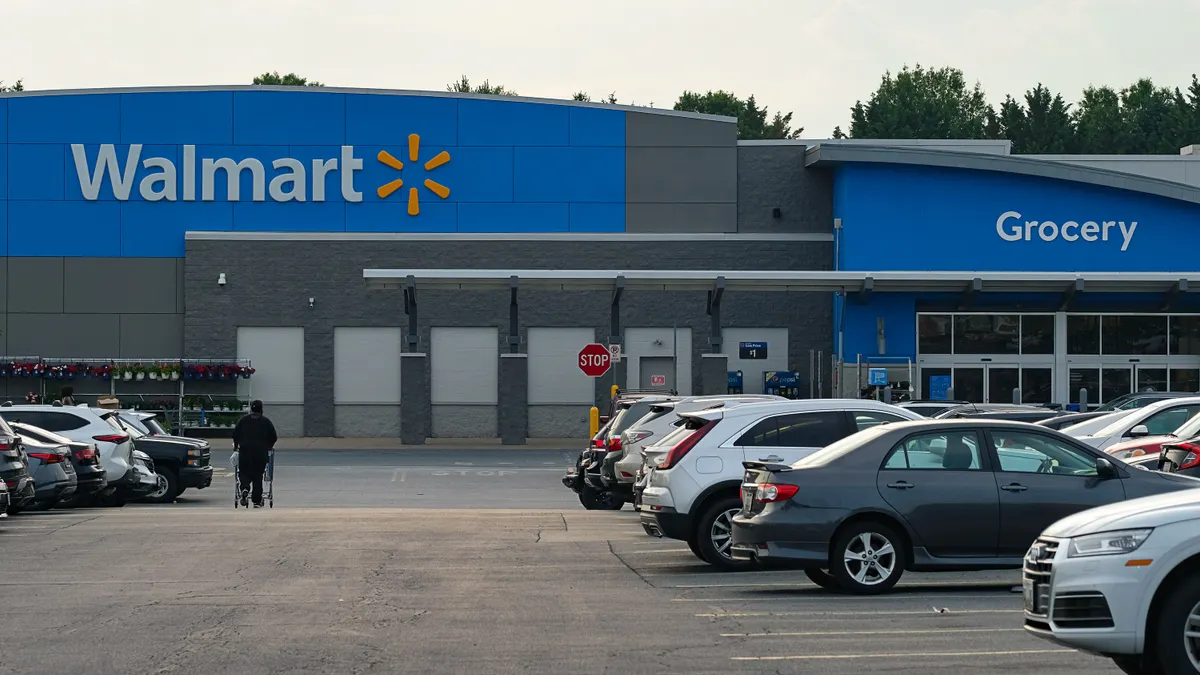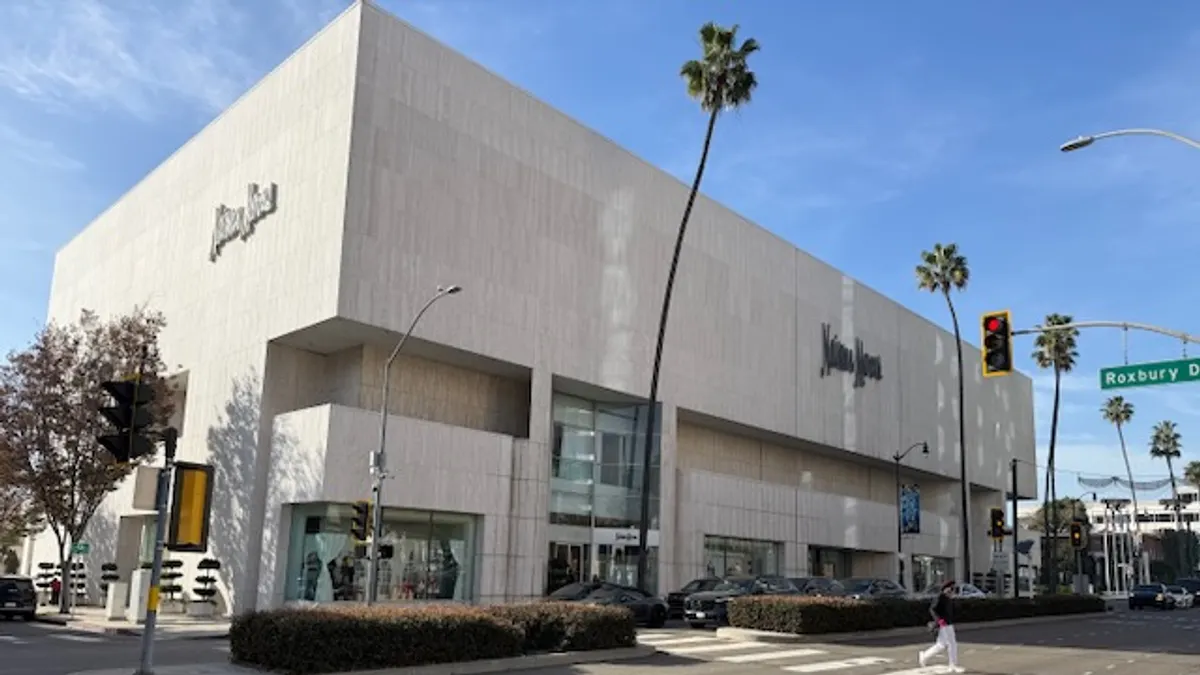Dick’s Sporting Goods and Foot Locker may have taken industry observers by surprise with their acquisition deal last month, but one of their largest partners likely wasn’t.
“Nike clearly bought into this,” Matt Powell, an adviser with BCE Consulting, said. “If Nike had said, ‘You know what, we think this is a bad idea. We don't want you to do this’ — I got to believe Dick’s probably would have said we're not going to do it.”
That’s one demonstration of how important Nike is to Foot Locker’s business. And, notably, how important the activewear brand is to Foot Locker’s turnaround. Foot Locker was one of a few major sufferers when Nike began deprioritizing wholesale partners a couple of years ago — and the retailer has yet to recover, with sales down 4.6% in its most recent quarter.
Many of its recent challenges come back to Nike, experts say. That includes the fact that Nike itself is in turnaround mode, with CEO Elliott Hill just taking over in October and already motoring through a laundry list of corrective actions. Among them, reprioritizing wholesale partners like Foot Locker and accelerating a product innovation pipeline that has lagged in recent years.
For that reason, Dick’s purchase of Foot Locker is “a massive vote of confidence for Elliott Hill,” Powell said, “and a big bet that he gets this done and gets it done relatively quickly.”
“You fix Nike and Foot Locker comes roaring back, regardless of the tired fleet and all the other issues,” Powell said. “If Elliott can right the Nike ship and get it back to a growth engine, there is no retailer in the world that benefits more from that than Foot Locker.”
But how quickly can he do it — and is that enough?
Fixing Nike
If a Nike comeback is what’s needed to turn around Foot Locker, it might be a few years until Dick’s sees the payoff from that. The activewear giant has already made sweeping changes to its C-suite under Hill, who announced a series of appointments, retirements and organizational shuffling during his first eight months at the helm.
“Nike's senior management changes have been the most comprehensive we have seen in the sector in decades,” TD Cowen analysts led by John Kernan said in a note in late June.
They included several title changes, a few returning veterans and the departure of four 26-year-plus employees. A Nike spokesperson told Retail Dive in June that the executive was done building out his direct leadership squad, though there may still be other shuffling occurring throughout the business.
“I think Elliott's the right man for the job,” Tom Nikic, managing director of equity research at Needham, said of the CEO, adding that his strategy “makes a tremendous amount of sense.”
“It's just that it's going to take some time to execute on this plan,” Nikic said, especially given how significant the contributions were from franchises like Jordan, Dunk and Air Force 1 that are now being scaled back.
The analyst noted that some shoes are doing well for Nike at the moment, like the Vomero and Pegasus Premium. Indeed, BMO Capital Markets in late June said both of those models were “showing signs of successful scaling” and there were also “promising launch signs” for products including the Air Max 1000, ReactX and Rejuven8. But those are “tiny” compared to the revenue declines happening across the classic franchises, Nikic noted.
“It dwarfs whatever growth you're seeing from the rest of the assortment,” Nikic said. “There's a small part of Nike's business that's growing and there's a large part of Nike's business that's shrinking. And as long as that large part is shrinking, it's just hard for you to get any growth out of the company.”
“They were almost a de facto Nike brick-and-mortar store.”

Tom Nikic
Managing Director of Equity Research at Needham
The normalization of those franchises will take a few quarters — and it’ll also be a few quarters before any product innovation under the new regime hits stores. NikeSkims, the brand’s venture with Kim Kardashian’s brand, has already been delayed until later this year. Powell estimates the broader timeline for product innovation under Hill is more like 18 months to two years from when he joined in October.
“You don't turn around and say, on Friday, ‘We're going to have a new product’ and on Monday that product is available,” Powell said. “You got to believe that Nike is throwing everything they can at the innovation engine right now and so — do they cut that time down to 15 months? Unless there were some great products in the pipeline, I don't see how it's sooner than 12 months.”
The turnaround timeline gets longer if Nike’s product innovation doesn’t land with customers, which has been an area Nike has struggled with in recent years, according to Nikic. Then there’s the fact that Nike is also contending with tariffs, has raised prices in recent months (though BMO analysts said this was not yet materially impacting demand) and not only has to cut back on its core sales drivers but also create renewed interest in them from shoppers that tend to be driven by exclusivity.
The easiest way to do that, according to both Nikic and Powell, is to release some compelling products that get people talking. Nikic pointed to Nike’s work with Virgil Abloh about a decade ago, when it was similarly in rough waters, as an example of how to right the ship. If a collaboration sells out, that will also draw attention in the sneakerhead community.
“If you go and you just shrink the Jordan assortment and then you come back and you say, ‘Oh, yeah, here's the same old Jordans you've been seeing for years, but there's just less of them now’ — like, that alone is probably not enough,” Nikic said.
Compelling collaborations and colorways are a must — as is pulling back hard on the availability of Dunk, Air Jordan and Air Force 1 inventory. Powell, for his part, isn’t sure if Nike is cutting sales of those products deeply enough, though he noted Nike shouldn’t “go totally dark” on them either.
The reason all of this is so important to Foot Locker is that Nike still accounts for almost 60% of Foot Locker’s sales. And that’s a significant decline from five years ago, when that number was sitting at 75%.
5 years ago, Nike made up 75% of Foot Locker's assortment
“They were almost a de facto Nike brick-and-mortar store,” Nikic said. “And then when the relationship with Nike soured it hit them really, really hard — so I don't think that's a situation that they want to repeat.”
Foot Locker has worked to diversify its assortment since then, adding or expanding deals with brands like Hoka, On and Birkenstock, but according to Powell those haven’t been able to offset the losses from Nike.
“You just don't take 30% of your business and redistribute it in a year,” he said, adding that brands like Hoka and On don’t want to grow that fast anyway.
Nikic said he would be “shocked” if Foot Locker ever returned to a 75% Nike assortment, but it’s still hugely beneficial to Foot Locker if Nike turns things around.
“I believe Elliott will do this,” Powell said. “And part of Foot Locker’s big problems over the years — besides, again, the tired fleet and unprofitable stores — is that the Nike business has been terrible. And when 60% of your business is terrible, there's not much you can do about that. … You fix Nike, and you immediately fix Foot Locker.”
Fixing Foot Locker
While Nike may be an answer to many of Foot Locker’s troubles, the retailer’s current financials still leave much to be desired, especially when compared to Dick’s solid sales growth over the years (a point the retailer’s board raised when Dick’s suggested the acquisition in the first place).
Comparing the two side by side, Dick’s sales grew every year from 2020 to 2024, while Foot Locker’s sales only increased once in that same period: that was in 2021, a year when many retailers saw a huge recovery over the pandemic-driven hit of 2020. Nike, like Dick’s, was largely positive during that five-year time frame, though growth slowed considerably last year as the activewear brand started hitting trouble. In its most recent fiscal year, which just ended and is not pictured below, full-year revenue fell 10%.
Foot Locker’s sales have declined the last three years
So what’s alluring to Dick’s about a business that has performed significantly beneath its own in recent memory? For one thing, a strong belief by Dick’s executives that they know how to solve Foot Locker’s operational challenges. Those include inventory management and discounting struggles, which have led to lower margins; a store fleet that is too big and in need of a revamp; and an opportunity to improve digital operations and its loyalty program.
“There's a lot of things that Foot Locker can do better, that the Foot Locker team knows they can do better, which Dick’s has executed on over the last five to 10 years,” Nikic said, adding that Dick’s has done a “phenomenal” job of improving its digital performance and has an “outstanding” loyalty program. “The Dick’s team may be saying, ‘We've run this playbook before with our own business. Now, let's run it with Foot Locker.’”
Dick’s is also a “superlative” store operator, according to Powell, which could help in renovating Foot Locker’s fleet and perhaps pulling up some of its lower performing locations. Foot Locker is already in the midst of a large-scale revamp of its footprint, which includes 300 store refreshes this year alone, and has unveiled a number of new store concepts to roll out.
Other locations are likely to close, even though Foot Locker has consistently trimmed its fleet for more than a decade. Indeed, Dick’s could be more aggressive with closures than Foot Locker was, which would make the existing fleet more profitable, and there’s also the possibility of shutting down or selling off some of Foot Locker’s other banners. Dick’s will likely review WSS, Atmos and Champs to see if they offer up a worthwhile customer base and make a decision from there, analysts said.
“There's still a lot of stores and I think at some point they'll reach an equilibrium, but it's unclear what that equilibrium will be,” Nikic said of Foot Locker’s footprint, which tops 2,400 locations. As to its other banners, “the question becomes: Are these stores serving a need in the marketplace? Are these stores profitable? Is there something that they bring to the table that Dick’s and the core Foot Locker banner don't have?”
The appeal of Foot Locker in the first place is that it caters to a different shopper than Dick’s. The Dick’s customer is a more suburban, team sports-focused shopper, while Foot Locker attracts a more urban, sneakerhead consumer that wears activewear for lifestyle purposes. A basketball shoe at Dick’s is sold to play basketball in; a basketball shoe at Foot Locker doesn’t often see a court. Combining the two companies also gives them both more power to negotiate with key suppliers like Nike and Adidas — and it gives Dick’s access to an international business.
“Foot Locker is sick, but they're not dead.”

Matt Powell
Adviser with BCE Consulting
It’s unlikely, according to Powell, that Dick’s itself will expand overseas. That’s mostly because the Dick’s model of enormous stores focused on team sports doesn’t really make sense in many other countries, given many of the popular sports in the U.S. just aren’t that big elsewhere. That doesn’t mean Dick’s couldn’t experiment with a different concept, but it would require a fundamentally different approach from the U.S., he noted.
Another factor in the acquisition, not to be underestimated, is that Dick’s bought Foot Locker for “a fire sale price,” Powell said. “This is an $8 billion retailer that they bought for $2.4 billion — typically a deal goes for something like one times sales, so this is a tremendous value deal for them.”
Nikic, likewise, believes Foot Locker is an under-earning company that should see sales and profitability improvements over time as Nike gets itself back together. Even if Foot Locker ends up a noticeably smaller company, if Dick’s can improve the company’s profitability, that’s still a win.
“Foot Locker is sick, but they're not dead. And again, I think a lot of their issues are fixable,” Powell said.
If anything, a bigger concern is whether or not Dick’s can pull it off, given its acquisition track record. Golf Galaxy has been “an average acquisition,” according to Powell, while the purchases of Galyan’s and Chick’s took a while to integrate well. The retailer also shuttered all of its Field & Stream stores, sold off that business to a venture led by two country music stars, backed away from its own outdoor concept Public Lands and shut down the website and stores of Moosejaw, which was only purchased in 2023.
“Field & Stream didn't really work. Public Lands didn't really work,” Powell said. “You kind of have a world where: Can Dick’s really execute this? What they do best is Dick’s.”



